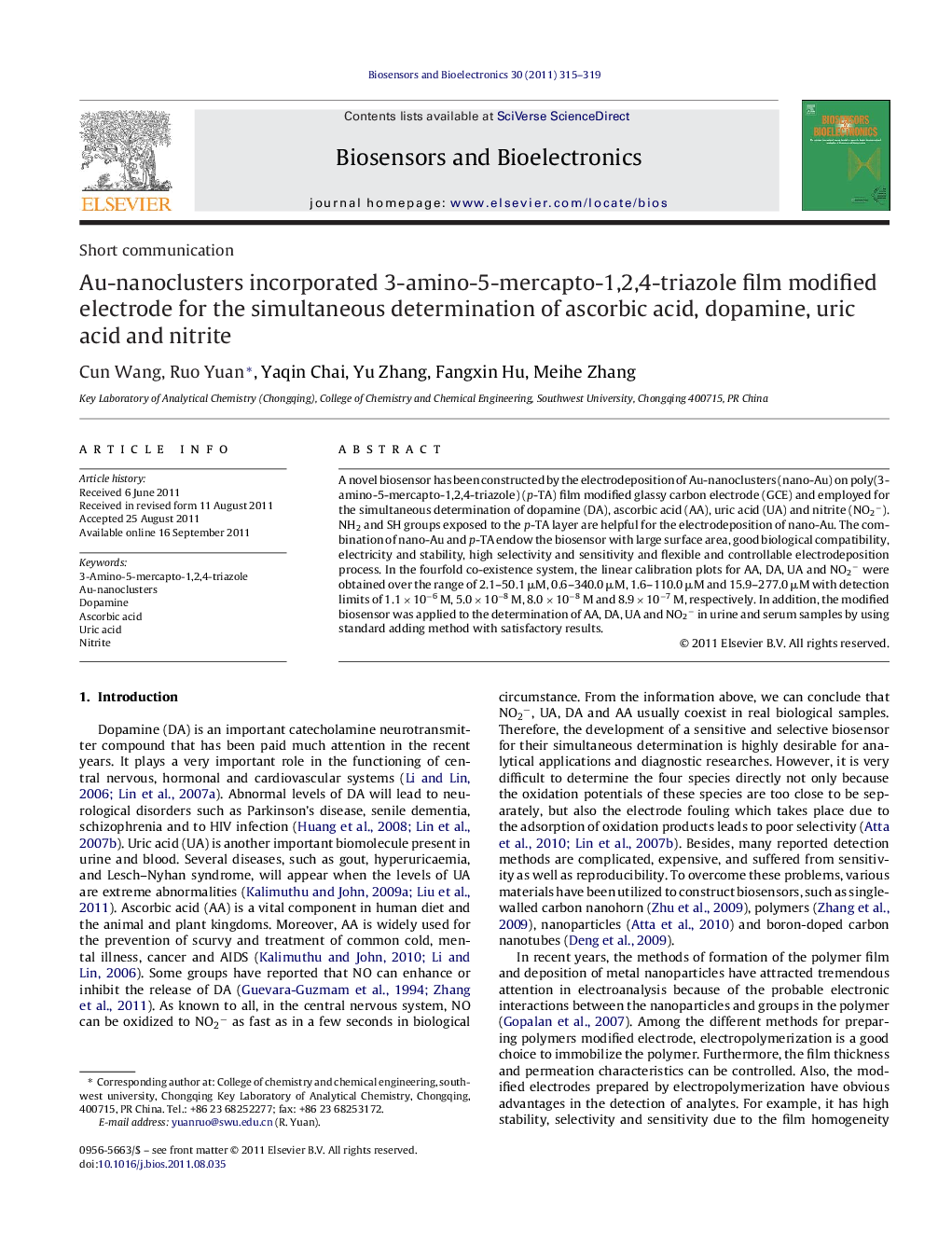| Article ID | Journal | Published Year | Pages | File Type |
|---|---|---|---|---|
| 867629 | Biosensors and Bioelectronics | 2011 | 5 Pages |
A novel biosensor has been constructed by the electrodeposition of Au-nanoclusters (nano-Au) on poly(3-amino-5-mercapto-1,2,4-triazole) (p-TA) film modified glassy carbon electrode (GCE) and employed for the simultaneous determination of dopamine (DA), ascorbic acid (AA), uric acid (UA) and nitrite (NO2−). NH2 and SH groups exposed to the p-TA layer are helpful for the electrodeposition of nano-Au. The combination of nano-Au and p-TA endow the biosensor with large surface area, good biological compatibility, electricity and stability, high selectivity and sensitivity and flexible and controllable electrodeposition process. In the fourfold co-existence system, the linear calibration plots for AA, DA, UA and NO2− were obtained over the range of 2.1–50.1 μM, 0.6–340.0 μM, 1.6–110.0 μM and 15.9–277.0 μM with detection limits of 1.1 × 10−6 M, 5.0 × 10−8 M, 8.0 × 10−8 M and 8.9 × 10−7 M, respectively. In addition, the modified biosensor was applied to the determination of AA, DA, UA and NO2− in urine and serum samples by using standard adding method with satisfactory results.
